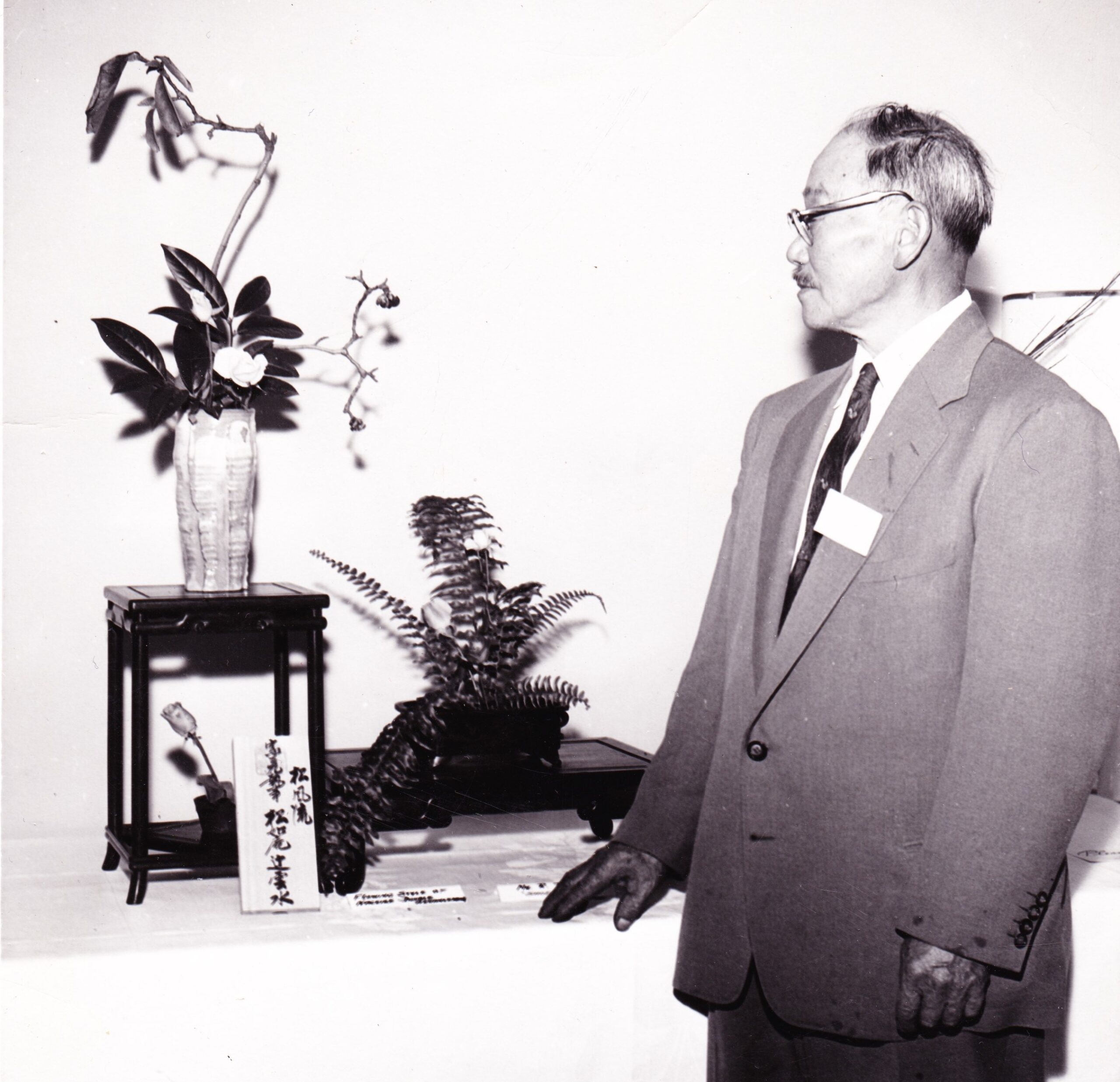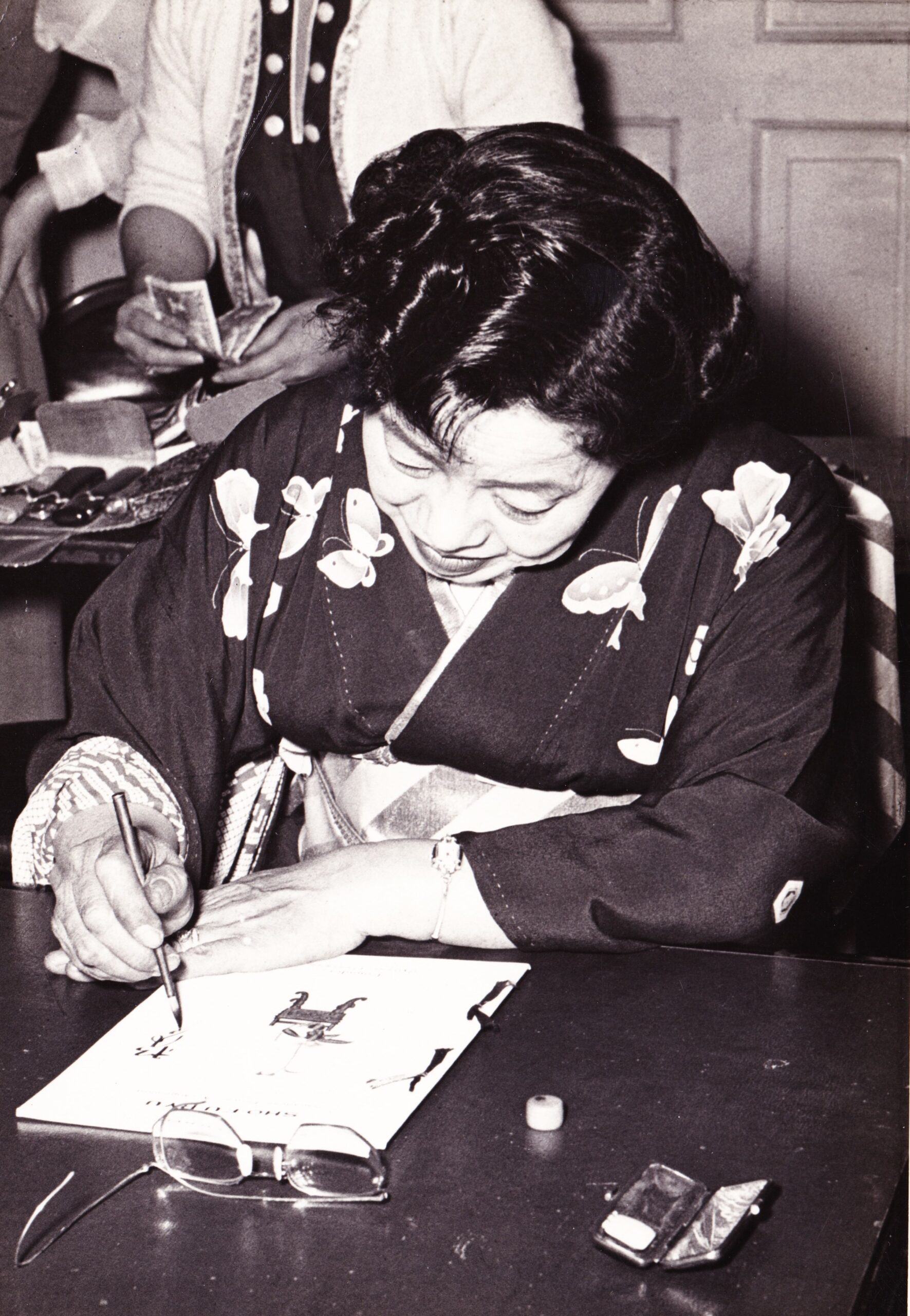Our History
“The purpose and objective of our club shall be to stimulate interest and appreciation in the art of Japanese flower arrangement, bonsai and gardening with particular emphasis on chrysanthemums.”
Founding Members
Our founding members were survivors. Thanks to their perseverance and determined efforts, they planted the seeds for a better future. We are grateful for their extraordinary contributions to Toronto’s cultural landscape.
There were also families and spouses who worked behind the scenes and at events: People like Martha Onodera who was one of the first board members, and Doreen Irie and Hanae Nishi who worked tirelessly as volunteers and at events to ensure their success.
Kay Aida (née Obokata)
Mr. R. Anzai
John Bradshaw
Fuji Hamazaki
Mr. M. Heike
Mr. Y. Hirano
Mrs. K. Irie
Sakuehei Izukawa
Kin Izumi
Eikichi Kagetsu
Louise Mototsune (née Sato)
Mr. G. Nakamachi
Mamoru Nishi
Mrs. M. Nishikawara
Sakae Ogaki (née Goto)
Jon Onodera
Roy C. Oyagi
Gloria Sumiya (née Sato)
Yosh(i) Suyama (née Omori)
Ryutaro Tsuji
Rev. Takashi (Kenryu) Tsuji
Chiyo Umezuki
Asao Yamada
Takeo Yoshida


Early Beginnings
In the fall of 1952, a group of people who were active in the Toronto Buddhist Church began meeting informally. They were interested in sharing their rich cultural heritage with others in the Greater Toronto Area.
This group had the foresight of wanting to continue traditional Japanese arts such as landscape gardening, bonsai and ikebana. It was a bold vision of inclusion and reaching beyond.
The Toronto Buddhist Church rented the former Canadian Legion Hall at 22 College St., for meetings and the Toronto Japanese Language School classes. There in early March 1953, the group met to discuss organizing a garden club.
According to their early minutes, Mamoru Nishi chaired the first part of the meeting. John Bradshaw, the Toronto Star’s Garden Editor, was the guest speaker and spoke about the care of house plants. The prominent horticulturalist, garden book author and broadcaster was known for his regular newspaper column, magazine articles and weekly CFRB radio talk show. He even hosted a TV program called The Country Gentleman in Hamilton.
Tak Yoshida chaired the second part of this meeting, which was all about founding the club. A committee was struck and plans drafted for the next general meeting.
Making a Name
At that meeting on April 10, 1953, the group decided to call themselves the Toronto Garden Club.
John Bradshaw was appointed honorary president and became their longtime advisor. Annual membership fees were set at $3 each and $5 for married couples. The rest of the details were left for one week later when the committee met on April 15, at the Toronto Buddhist Church.
A Constitution was Drafted
“The purpose and objective of our club shall be to stimulate interest and appreciation in the art of Japanese flower arrangement, bonsai and gardening with particular emphasis on chrysanthemums.”
First Annual Show
The club’s first show was held at the Canadian Legion Hall in October 1953 and was a huge success.
An annual show has been held every year since. The club has developed and delivered other events including lectures, demonstrations and even posted virtual shows during the pandemic, when people were not able to gather together.
During the pandemic, the annual show was posted online.
Celebrating Milestones
Thanks to support from the Japanese Canadian Survivors Health & Wellness Fund, the Toronto Japanese Garden Club celebrated their 70th anniversary on May 15, 2022, at the Japanese Canadian Cultural Centre and honoured their survivor members.
Survivors are people who were uprooted and displaced by the B.C. government between 1942 and April 1, 1949. The end date is significant as Japanese Canadians were finally granted the freedom to live anywhere in Canada as well as voting rights on April 1, 1949.
It was only in 2021 – 72 years later – that Toronto Mayor John Tory declared April 1 as Japanese Canadian Freedom Day in the city of Toronto.
Creating a Legacy
In introducing these traditional arts to Canadian audiences, our club has contributed to arts and culture in the community in many ways – from staging flower shows to offering lectures and lessons in ikebana and bonsai. In terms of ikebana – our shows are one of few venues where different schools of ikebana participate collectively.
We have also paved the way for other groups who were inspired to follow, such as:
- Toronto Bonsai Society
- Canadian Chrysanthemum and Dahlia Society
- Hamilton Bonsai Society
Over the years our members have had their hands in helping with other gardens around the city. For example: Arranging the cherry tree plantings in High Park, establishing the Ontario Institute for Studies in Education (OISE) Japanese rooftop garden in conjunction with the Toronto Bonsai Society and stewardship of the gardens at the Japanese Canadian Cultural Centre. These are all examples of their hard work and tireless commitment.
Many of our members have also been awarded Ontario Volunteer Service Awards – for their five to 50 years of continuous service.
Looking to the Future
Toronto Japanese Garden Club remains strong and resilient.
Our survivor members overcame tremendous hardships, but continued to push ahead and built this club.


